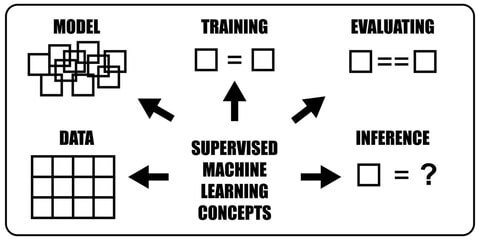Introduction:
Machine Learning (ML) has emerged as a powerful tool in the field of artificial intelligence, enabling computers to learn from data and make intelligent decisions. Within the realm of ML, there exist various types of algorithms, each tailored to solve different problems and extract insights from data. In this technical blog, we will delve into the different types of machine learning algorithms, shedding light on their unique characteristics and applications. So, let’s embark on this journey of discovery!

Supervised Learning:
Supervised learning is one of the fundamental branches of machine learning. In this approach, algorithms are trained using labeled data, where input samples are paired with corresponding target outputs. The goal is to learn a mapping function that can predict the correct output for new, unseen inputs. Classification and regression are two common tasks in supervised learning. Classification involves assigning input data to predefined categories, while regression focuses on predicting continuous values. Examples of supervised learning algorithms include decision trees, support vector machines (SVMs), and neural networks.
Unsupervised Learning:

In unsupervised learning, the algorithm works with unlabeled data, extracting patterns and structures without any predefined outputs. The objective is to uncover meaningful relationships or clusters within the data. Clustering algorithms group similar data points together based on their intrinsic properties. Dimensionality reduction techniques, such as Principal Component Analysis (PCA), aim to reduce the number of features while preserving relevant information. Unsupervised learning finds applications in areas like customer segmentation, anomaly detection, and data exploration.
Semi-Supervised Learning:
Semi-supervised learning is a hybrid approach that combines elements of both supervised and unsupervised learning. In this setting, the algorithm leverages a small amount of labeled data along with a larger volume of unlabeled data. The labeled examples guide the learning process, while the unlabeled data helps to discover additional patterns and improve model performance. Semi-supervised learning is beneficial when obtaining labeled data is expensive or time-consuming. It has applications in fields such as text classification, speech recognition, and image recognition.

Reinforcement Learning:
Reinforcement learning (RL) involves an agent interacting with an environment and learning through trial and error. The agent takes actions in the environment and receives feedback in the form of rewards or penalties. The objective is for the agent to learn an optimal policy that maximizes the cumulative reward over time. RL has achieved remarkable success in domains like game playing, robotics, and autonomous systems. It enables machines to learn through exploration, making it well-suited for scenarios with complex, dynamic environments.
Deep Learning:
Deep learning is a subfield of machine learning that focuses on artificial neural networks inspired by the structure and function of the human brain. Deep learning models, such as deep neural networks and convolutional neural networks, can automatically learn hierarchical representations from data, enabling them to solve complex problems. Deep learning has revolutionized areas like image and speech recognition, natural language processing, and recommendation systems. Its ability to learn from large-scale datasets has led to groundbreaking advancements in AI.
Conclusion:
Machine learning encompasses a rich landscape of algorithms, each designed to tackle specific challenges and extract valuable insights from data. From supervised learning for classification and regression to unsupervised learning for pattern discovery, and from semi-supervised learning for leveraging limited labeled data to reinforcement learning for optimal decision-making, the diverse types of machine learning algorithms offer a powerful toolkit for solving real-world problems.
As you continue your journey into the world of machine learning, it’s essential to understand the strengths and applications of each algorithm type. This knowledge will empower you to choose the right approach for your specific problem and unlock the full potential of machine learning in your projects. So, explore, experiment, and embrace the power of machine learning algorithms



